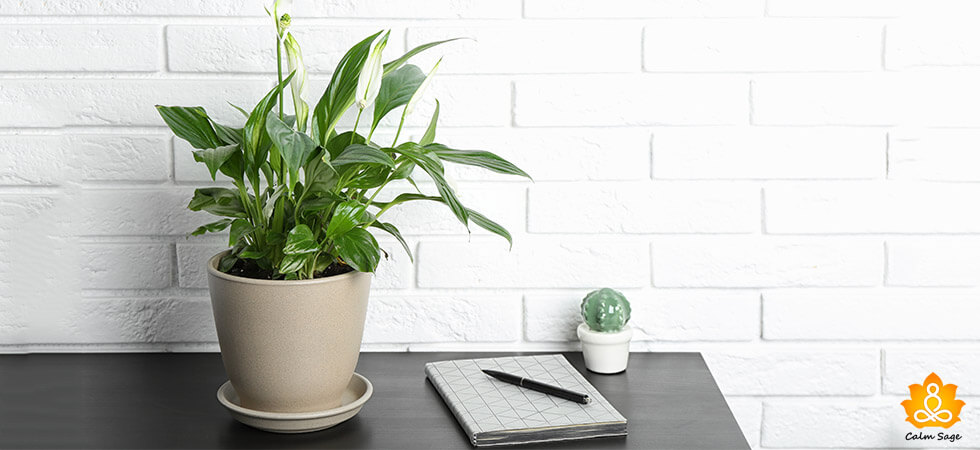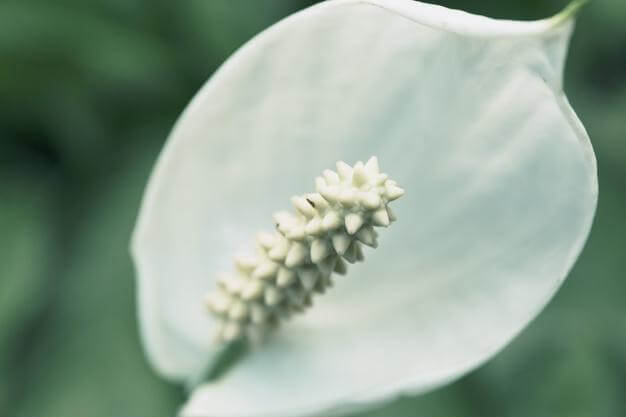Peace Lily Plant: How To Grow It Right? Your Complete Guide

Are you looking for an indoor plant that purifies the air, radiates positivity and is aesthetically pleasing? We have a suggestion for you! How about adding a peace lily plant to your surrounding?
After all there are a lot of benefits that this tropical plant has to offer. But, above all it is a great indoor plant that falls in the list of positive plants.
So, let us find out more about this beautiful arrow looking plant and see how you can make it a part of your life!
Complete Profile of Peace Lily Plant
Botanical Name |
Spathiphyllum |
| Common Name | Peace lily, spath lily |
| Plant Type | Flowering tropical plant |
| Mature Size | Up to 3 feet tall indoors; up to 6 feet tall outdoors |
| Sun Exposure | Medium, indirect light |
| Soil Type | Peat-based potting mix with perlite, sand, or bark |
| Soil pH | 5.8 to 6.5 |
| Bloom Time | Spring |
| Flower Color | White or yellow |
| Hardiness Zones | 11 to 12, USDA |
| Native Area | The rainforests of Central and South America |

Fun Fact About Peace Lily:
Despite its name being Peace Lily it doesn’t belong to the true lilies. Also it is one of the few plants that was identified by NASA as an air purifying plant.
Benefits of Peace Lily Plants:
Some of the key benefits that Peace Lily Plants have to offer includes:
1. Purification of Air
Time and again studies have supported that peace lily plants absorb air pollutants and create breathable environments. It can absorb harmful air pollutants like benzene, formaldehyde, carbon monoxide, and xylene. It makes the air breathable by adding moisture to it and by eliminating almost 60% of the pollutants.
2. Promoting Restful Sleep
If poor sleep is disturbing you then placing peace lily in the corner of your house is recommended. This plant promotes sleep by filtering the air, increasing the level of humidity, and letting you breathe better. Also the beauty of this plant produces a calming impact on the brain and body.
3. Boosting Positivity in The Surroundings
According to Feng Shui it is the best bedroom plant that brings a peaceful touch to the room (hence the name) along with positive energy.
4. Absorbs Acetone Vapors
Other than purifying the air this plant also absorbs harmful components like acetone and alcohol. These vapors have harmful impacts such as headaches, lack of coordination, lethargy, and acetone poisoning. Thus creating a healthier place around you.
Types of Peace Lily Plants
There are varieties of hybrids of peace lily that are available in the market. They majorly differ on three grounds that are size, flower color, and leaf color. Here are the most commonly found varieties of peace lilies:
- Spathiphyllum: It is the most common form of peace lily plant. It produces white to off-white flowers.
- Spathiphyllum ’Power Petite’: It is a small variety of peace lily. It grows to only about 15 inches.
- ‘Mauna Loa Supreme’: Quite a common variety of peace lily. It grows to 3 to 4 feet tall with leaves up to 9 inches wide.
- ‘Sensation’: This is the largest of the peace lily varieties and will reach up to 6 feet in height. The leaves are up to 20-inch broad.
- ‘Mojo’: This is another large peace lily plant that has vibrant green leaves.
- ‘Golden Delicious’: This relatively new peace lily hybrid is distinguished by its stunning golden-green color.
- ‘Starlight’: This peace lily plant is majorly known for heavy, multiple blooms (with as many as 20 flowers on a single plant). Hence the name!

How to Take Care of a Peace Lily Plant?
To make sure that your peace lily plant lives long and healthy it is important that you take good care of them. Here are some important factors that you should consider in growing peace lily plants:
Sunlight: If you are keeping a peace lily plant indoor it is important that you keep them at a place where it receives indirect sunlight. Interestingly, the leaves of this plant curls up when it receives too much sunlight (giving you a direct sign). So, place it in the shadier location of your room.
Water: Coming from the rainforest regions, peace lily plants do require water! During summer days it is recommended that you water and mist peace lilies frequently. In winters make sure that you don’t let water dry.
Temperature: Cold temperature is not suitable for a peace lily plant. They grow best in moist warmth. The ideal temperature range is 65 to 80 degrees.
Soil: Loose potting soil is the best for the growth of peace lily plants.
Where to Place a Peace Lily Plant in Home?
Place them in places which are dark and cold to bring the energy of warmth. It is usually suggested to be placed on an office desk, study area or any place where new learning and hobbies take place.
To wrap up, peace lily is one great indoor plant that is likely to add a lot of benefits in your life. From adding aesthetic beauty to purifying air it has got you all covered. But when you get it for yourself, make sure that you take good care of it, it is only then when its benefits will flow in.
So, when are you getting your peace lily plant?
PS: Don’t forget to share your experience of peace lily plant with us
More Interesting Articles:
Snake Plant: How To Grow It Right? Complete Guide
Top 7 Colors to Bring Positivity in Your Home
Give Your Home Good Vibes With These Fortunate Artefact!
Cactus Plant: Bombshell of Positivity| Learn to Grow Them Right




















